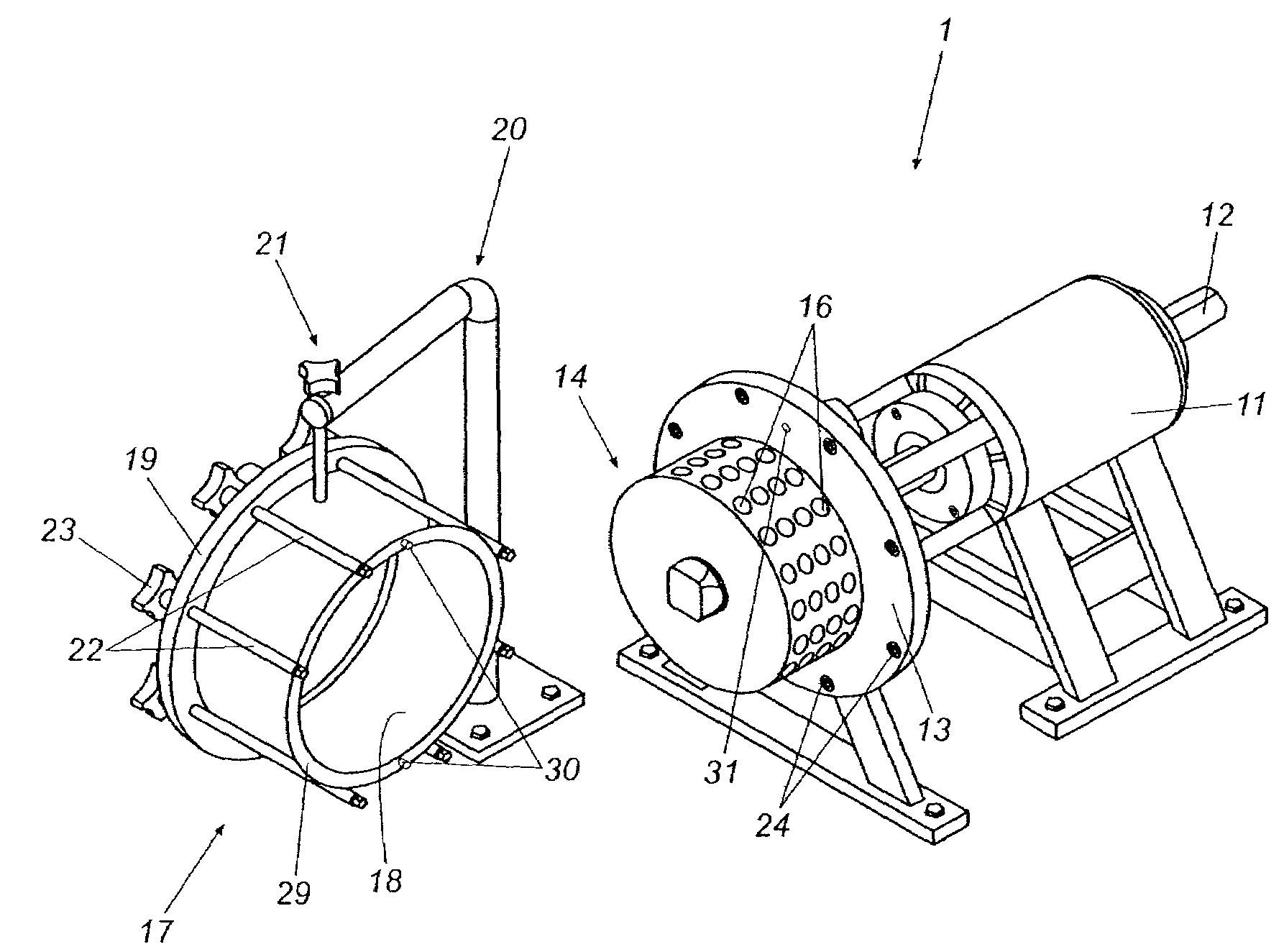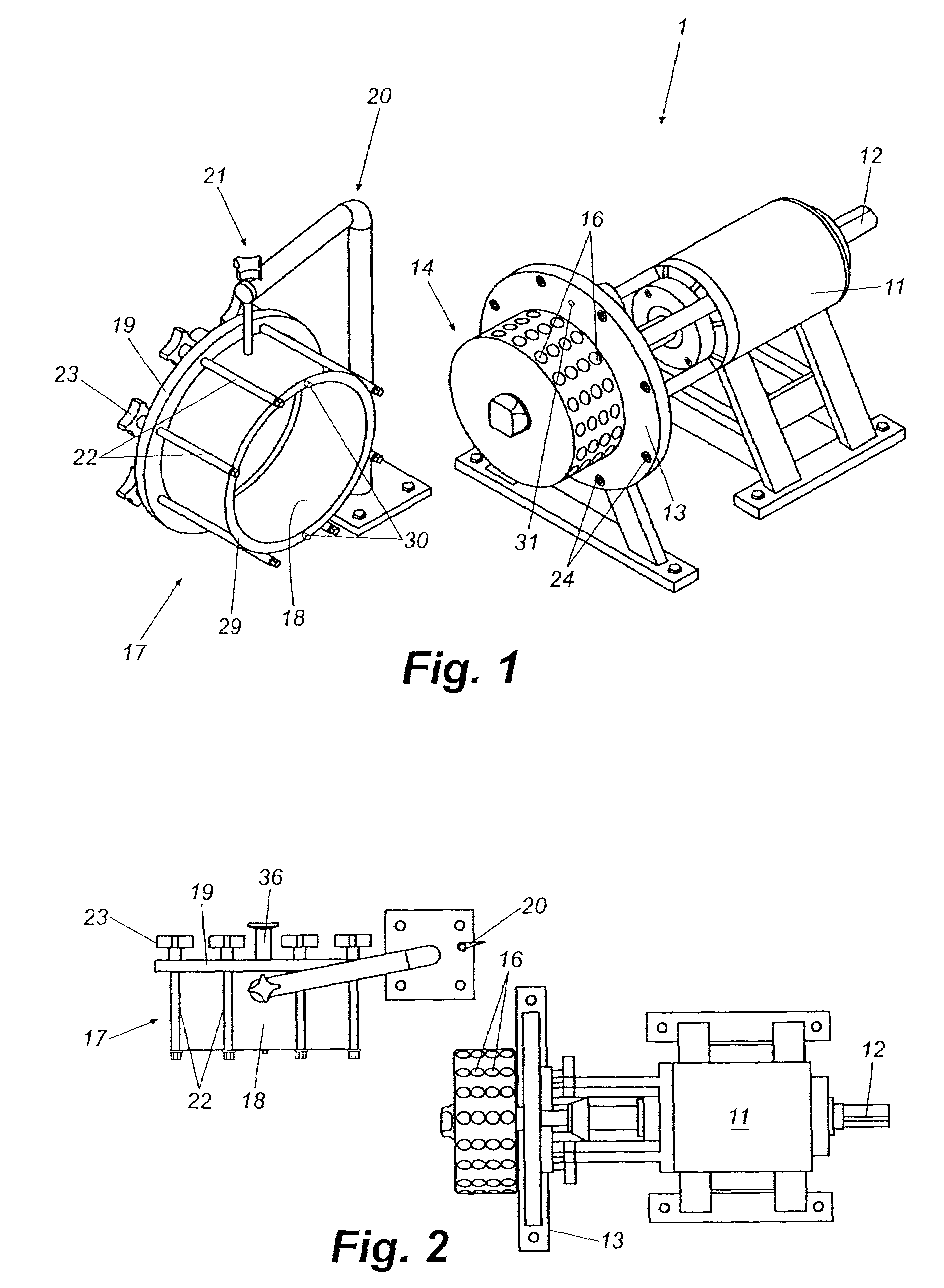Controlled cavitation device with easy disassembly and cleaning
a cavitation device and controlled technology, applied in the direction of mixers, mixer accessories, mixing, etc., can solve the problems of time-consuming, labor-intensive, and time-consuming disassembly, and achieve the effect of high rotational speed, easy disassembly and cleaning, and high efficiency of fluid mixing
- Summary
- Abstract
- Description
- Claims
- Application Information
AI Technical Summary
Benefits of technology
Problems solved by technology
Method used
Image
Examples
Embodiment Construction
[0019]The following description of the invention is provided as an enabling teaching of the invention and its best, currently known embodiment. Those skilled in the art will recognize that many changes can be made to the embodiments described while still obtaining the beneficial results of the present invention. It will also be apparent that some of the desired benefits of the present invention can be obtained by selecting some of the features of the present invention without utilizing other features. Accordingly, those who work in the art will recognize that many modifications and adaptations of the invention are possible and may even be desirable in certain circumstances and are part of the present invention. Thus, the following description is provided as illustrative of the principles of the invention and not in limitation thereof since the scope of the present invention is defined by the claims.
[0020]Referring now in more detail to the drawing figures, wherein like reference num...
PUM
 Login to View More
Login to View More Abstract
Description
Claims
Application Information
 Login to View More
Login to View More - R&D
- Intellectual Property
- Life Sciences
- Materials
- Tech Scout
- Unparalleled Data Quality
- Higher Quality Content
- 60% Fewer Hallucinations
Browse by: Latest US Patents, China's latest patents, Technical Efficacy Thesaurus, Application Domain, Technology Topic, Popular Technical Reports.
© 2025 PatSnap. All rights reserved.Legal|Privacy policy|Modern Slavery Act Transparency Statement|Sitemap|About US| Contact US: help@patsnap.com



